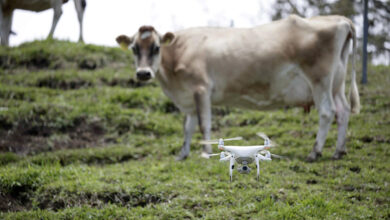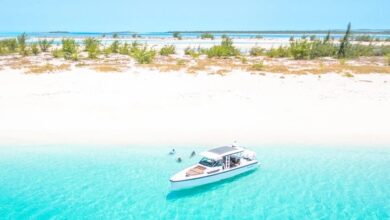Puerto Rico Battles Sargassum with Shovels, Drones, and Sheer Willpower

As a record tide of sargassum suffocates Puerto Rico’s coastline, ordinary citizens and overwhelmed officials rush to fight decay, protect marine life, and salvage tourism—one rake, one crate, one dawn patrol at a time.
A Morning Fight at Escambrón
At 6:30 A.M., before the sun turns the beach into a furnace, Juan Manuel Vérgalo grabs a rake and joins a line of volunteers hauling crates of decomposing seaweed off Escambrón Beach. He works in silence at first, the sour air thick with rot, the ocean barely visible beyond the brown mats. “This is a disaster,” he finally mutters. Not a metaphor—he means it literally. “It’s like a hurricane, an earthquake, or a tsunami,” he tells EFE.
Originally from Argentina, Vérgalo moved to Puerto Rico five years ago for the water—for the reefs, the marine life, the chance to live near something alive. Now, that life is drowning in sludge. The volunteers have come in small waves: families, tourists, scuba instructors, and locals who remember what this beach used to look like. They scoop seaweed into black bins, forming shoulder-to-shoulder chains that pass the slick weight down the line. A tractor groans in the distance, ready to carry the piles to a waiting dumpster.
“Look at what it’s doing to the turtles,” he says, showing videos on his phone—sea creatures tangled and limp, robbed of oxygen by the thick algae. He gestures toward the coral line just offshore, a graveyard in progress. “This isn’t just an eyesore. It’s suffocating everything.”
Dominican diver Alexander Ravelo works beside him, nodding. He adds that the damage isn’t only biological—it’s economic. “This is our livelihood,” he tells EFE. “And when it smells like death, tourists don’t swim, they don’t book excursions, and the ripple effect hits everyone.”
A Crisis That Stinks—Literally
Sargassum isn’t new. It’s been floating in the Atlantic for centuries. But the volume hitting Puerto Rico’s coast this year is unmatched. According to U.S. environmental agencies and Caribbean marine researchers, 2025 could be the worst sargassum bloom on record—with up to 40 million metric tons moving through tropical currents toward the islands.
The science is precise. In small doses, sargassum is part of the marine ecosystem—a place for baby fish to grow, a floating buffet for migratory birds. But when it clogs the shore, it turns lethal. Starved of sunlight, seagrass dies. Coral bleaches. Photosynthesis stops. Then the seaweed begins to rot.
“Once it piles up, it starts decomposing,” Vérgalo says. “And what it releases—hydrogen sulfide, methane, ammonia—it’s not just unpleasant. It’s dangerous.” The gases can irritate lungs, eyes, and skin. Visitors complain of nausea. Beach workers report headaches, coughing fits, and fatigue.
“We’re working in a biological hazard zone,” Ravelo adds. “But if we don’t do it, who will?”
Drones, Boats, and a State of Emergency
Puerto Rico’s government isn’t ignoring the crisis. Governor Jenniffer González issued an executive order on July 1, speeding up emergency permits and clearing regulatory hurdles so agencies can act faster. The Department of Natural and Environmental Resources now deploys drones to scan sargassum fields offshore and directs new skimming boats to intercept it before it hits sand.
But timing is everything. “Every hour the sargassum sits on the beach is an hour closer to a health emergency,” says one municipal worker between shifts. The new boats, costing around $750,000, can lift tons of algae directly from the sea into onboard tanks. But they’re still too few and too new to make a visible dent.
At the community level, improvisation rules. Beachgoers bring their tools. Locals coordinate via WhatsApp and Instagram. Volunteers learn which beaches are worst by smell, not by data. They know which gloves work, when to stop for shade, and how to teach kids not to touch the wrong patch of seaweed.
Everyone agrees: the short-term battle is about survival. The long-term question is more challenging. Can Puerto Rico treat sargassum not as trash, but as something to be managed—maybe even used? Compost? Fuel? Biogas? “Right now, we’re just trying to keep the beaches usable,” Vérgalo says. “But we need a real plan.”

Sand, Sweat, and Something Like Hope
By midmorning, the heat climbs. The crates grow heavier. The scent of sulfur sharpens. But no one stops. They dig. They drag. They joke through masks. A girl, no older than eight, fills her bucket beside her father. Her T-shirt reads “Protect What You Love.”
These scenes unfold not just in Escambrón, but across Puerto Rico’s eastern shore—from Luquillo to Culebra, Fajardo to Humacao. Communities are improvising around a shared truth: this isn’t a one-off. It’s the new tide. And if they don’t act, the beaches they love may become unusable for weeks, even months.
Ravelo calls it “a quiet emergency.” One that creeps in rather than crashes down. And that’s what makes it so hard to fight. No sirens. No dramatic footage. Just slow decay and a rotten smell that drives the island’s lifeblood—tourism—back indoors.
Still, they return every morning. Vérgalo and Ravelo. The school kids and divers. The servers and retirees. They pick up the rakes and the crates. They log the seaweed loads and share videos. They organize cleanup days and alert neighbors.
They aren’t waiting for a perfect solution. They’re building one, one crate at a time.
The next wave is already building offshore. In some places, it will arrive in hours. In others, a few days. When it does, Puerto Ricans will meet it again—boots in the sand, gloves on, backs bent because this is their coast, their reef, their economy, and their home.
Lea Tambien: Spotlight and Sequins: Venezuela’s Festival of Inclusion Rewrites the Script for Disability and Art
There’s no easy way to hold the line. But there is the decision to keep it.
Puerto Rico has made that decision. And every morning, on every beach, the proof is there in the sweat and the salt.
Credits: Reporting based on interviews from EFE.




